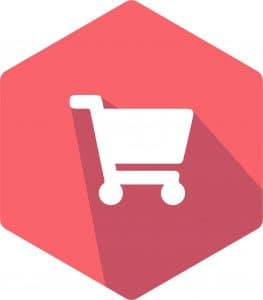When it comes to maximizing the potential revenue of your eCommerce business, few things can be more valuable than assortment optimization. The right mix of products can make all the difference in helping control your business costs, while also maintaining your appeal with customers.
Sound assortment planning is especially valuable in today’s environment, when supply chain issues continue to disrupt operations for many products and industries across the globe.
Here’s a closer look at how product assortment optimization can help your eCommerce business or marketplace thrive — and how today’s technology makes assortment planning easier than ever.
What Is Assortment Optimization?
In its most basic sense, product assortment optimization is the process in which an eCommerce business or marketplace decides which products it should offer to shoppers. This mix of goods is strategically selected based on customer preferences to maximize the store’s revenue.
Finding the optimal assortment generally focuses on two main types of products: fast-moving goods that sell at higher quantities but deliver a lower profit margin per item sold (like clothing), and higher-end goods that sell slower but have a higher profit margin (such as electronics).
Successful eCommerce marketplaces generally build their merchandise assortment strategy with these two broad types of products in mind, as this ensures the most consistent flow of revenue from their customer base.
Why You Should Use Assortment Gap Analysis
While assortment optimization may sound easy, the reality is far different. It is all too easy to develop an inadequate product mix that doesn’t offer enough variety to keep customers engaged. In some cases, a lack of alternative products can result in lost sales if an item goes out of stock due to supply chain issues or other factors. For other products, SKUs that are too similar to each other can ultimately cannibalize sales.
A recent analysis by Pimcy determined that while product failure rates aren’t the staggering 95% reported by some sources, at least 40% of new product launches could be considered a failure. In their analysis, they also noted that “a distinction in failure rates can be made across the various types of innovation: incremental innovation, more innovative development, and radical innovation. […] The failure rate increases the more innovative the solution is. However, on the upside, there also is the potential for a bigger return.”
Whether the product is something completely new or simply an improved version of a product that is already on the market, there is never a guarantee that it will be a success. This is especially true in the competitive world of eCommerce, where new marketplaces often struggle to thrive against more established competition.
Despite these sobering statistics, customers are often interested in trying something new, particularly in product categories like clothing or jewelry. Part of what keeps them coming back to an eCommerce business is the promise that it will have something new for them to try — be it a new T-shirt design, improved backpacking gear, or something else entirely.
Because of this, assortment optimization is an ongoing process. It can’t be a “one and done” activity. Customer preferences, supply chain factors, the introduction of new products and the discontinuation of old products means the product mix may be constantly changing. An assortment gap analysis must be performed regularly to ensure your business is introducing new products that will connect with customers — and removing products that are no longer making a profit.
Why the Time Is Now For Better Assortment Planning
With more competition thanks to the rising popularity of digital shopping, eCommerce businesses and marketplaces must prioritize assortment optimization like never before. Understanding which items are missing from your catalogs can make all the difference — and fortunately, this process no longer needs to be left to guesswork.
Running an assortment gap analysis helps your business determine best-selling products or categories from reputable sellers that should be added to the online store. Data-driven, AI-enabled tools use web scraping and other data retrieval methods to gather information on billions of products across multiple channels.
eCommerce stores that use these solutions can download information on a relevant product category, retrieve GTINs for best-selling items and obtain product lists by seller. By running this assortment gap analysis, an eCommerce marketplace can ask its current sellers to onboard new items that have a proven record of successful sales on other channels. If this isn’t an option, an eCommerce marketplace could attempt to onboard new sellers who offer the desired products.
With quality information readily available through a data-driven assortment gap analysis, it has never been easier to access and utilize this data. Such information is crucial for staying ahead of your competitors — many of whom are using similar resources for their own assortment optimization efforts.
The Benefits of Assortment Optimization
A sound assortment optimization strategy offers several tangible benefits for eCommerce businesses. An assortment gap analysis can help your business understand the eCommerce landscape as a whole — including customer preferences and competitor behaviors.
With this data, eCommerce businesses can do more than identify new options that can be added to their marketplace. They will be able to identify which mix of products will create a good blend of high-volume and high-profit sales that appeal to their target audience. They will also be better able to identify product lines that are declining in popularity and potentially reducing their profit margins.
This allows marketplaces to create a collaborative relationship with their sellers that focuses on creating win-win solutions. After all, by utilizing shopper insights and providing data-based product onboarding recommendations, marketplaces and sellers can increase their sales success. This creates an atmosphere of transparency and accountability that sees all parties involved better able to optimize their product lineup and take ownership of their results.
Collecting these insights in real time can also lead to more agile and flexible decision making. Quickly identifying trends can help your business mitigate supply chain concerns by adapting its product line based on seasonal changes or other trends. Rapidly pivoting your product assortment ensures you can always offer relevant items at any time of year.
By providing products that shoppers actually want, your eCommerce business can become the go-to online resource for your target audience.
Strengthen Your Merchandise Assortment Strategy With Cluster
If you’re ready to strengthen your assortment planning processes, Cluster can help. Our Optimal Assortment services are designed to help both marketplaces and brands identify category gaps by assessing product data across channels. With full visibility across the entire eCommerce landscape, you can gain the insights you need to boost sales by presenting relevant, high-demand items to your customers.
As you use assortment optimization to continually present shoppers with trending, best-selling products from trusted sellers, you will be able to accelerate sustainable growth that builds your reputation and keeps customers coming back time and time again.
With Cluster on your side, lasting marketplace success is closer than you think!









